Fashioned out of marble, the statue depicts Hermes draped in a cloak and carrying a staff known as a kerykeion while a ram, an ancient Greek symbol of strength and courage, sits at his feet.
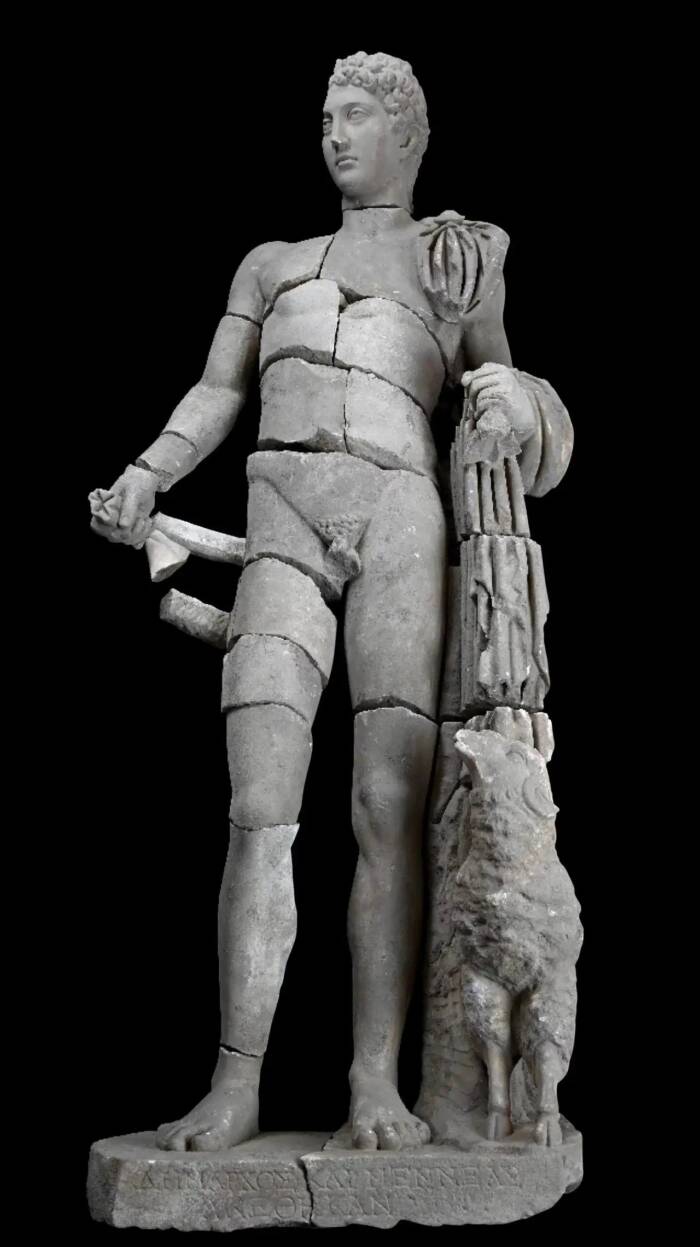
AA PhotoThe reassembled Hermes statue that was unearthed in Aspendos, Türkiye.
As part of Türkiye’s ongoing “Heritage to the Future Project,” archaeologists were excavating the ancient Greco-Roman city of Aspendos in the Antalya province when they came across a marble statue of the god Hermes among the ruins of an enormous fountain.
Nearby, they also found marble heads depicting the goddesses Aphrodite and Eros, as well as marble fragments belonging to statues of Artemis and Nemesis. Based on stylistic features, archaeologists dated these sculptures to the Roman Imperial period, roughly between the second and third centuries C.E.
An Ancient Hermes Statue Becomes The Region’s Latest Stunning Archaeological Find
The Turkish Ministry of Culture and Tourism has been conducting its Heritage to the Future Project since July 2024 with the intent of unearthing artifacts that reveal the country’s rich, vibrant history. The goal is to ensure that this is a “Golden Age of Turkish Archaeology,” and the Turkish government has committed the equivalent of $33.4 million to the project.
Over the past several months, there have been numerous groundbreaking discoveries, including that of a “mosaic house” in Pergamon, a 1,600-year-old drinking filter in Hadrianopolis, and a Roman bathhouse in Milas.
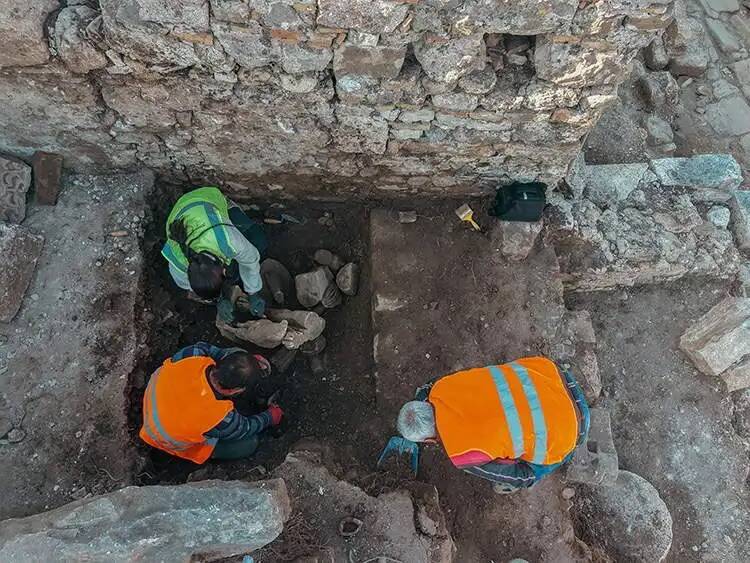
AA PhotoThe Hermes statue’s fragments, discovered near the south gate in Aspendos.
The project’s latest discovery comes from Aspendos, an ancient city best known for its Roman theater, constructed in the second century C.E., during the reign of Emperor Marcus Aurelius, by the noted architect Zenon. Additionally, the city’s ruins hold the remains of a basilica, agora, baths, and an 11.8-mile aqueduct system.
Excavations at the ancient city unveiled an impressive five-and-a-half-foot marble Hermes statue in a state of remarkable preservation. Hermes is shown here dressed in a cloak and holding a purse and kerykeion (staff), with a ram — a symbol of strength and courage in Greek culture — next to his left foot.
The statue was found at the ruins of a nymphaeum, a fountain shrine dedicated to the nymphs of Greco-Roman mythology, near the city’s south gate.
Alongside the intact Hermes statue were statue fragments of other gods and goddesses, though none were quite as complete as Hermes. Though the process was painstaking, the statue has now been fully reassembled.
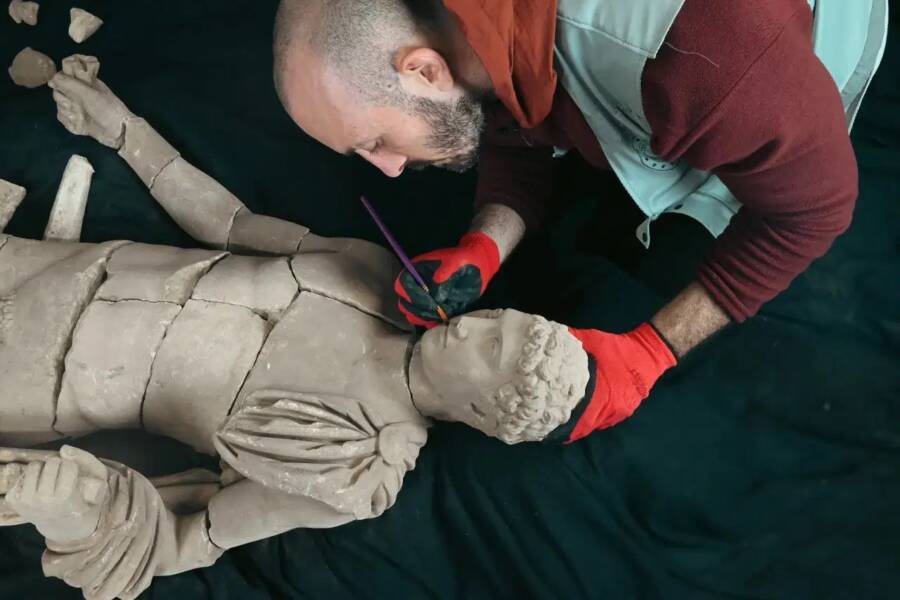
AA PhotoArchaeologists eventually fully reassembled the Hermes statue found in Aspendos.
“In Aspendos, the silent witness of time, figures buried for centuries have come to light,” said Mehmet Nuri Ersoy, the Minister of Culture and Tourism, in a press release. “I would like to thank our employees who contributed to the project and hope that these works will be beneficial to the cultural and tourism life of our country.”
Türkiye’s “Heritage To The Future Project” Continues To Shed Light On The Area’s Ancient History
The Heritage to the Future Project is intended to last through mid-2028, with the goal of accomplishing in just four years what had traditionally taken six decades in the field of Turkish archaeology.
Central to the initiative is consolidating excavation, restoration, and landscaping efforts across 224 archaeological sites nationwide. Turkish archaeologists are now overseeing sites previously managed by foreign researchers, which has fostered collaboration between local and international experts.
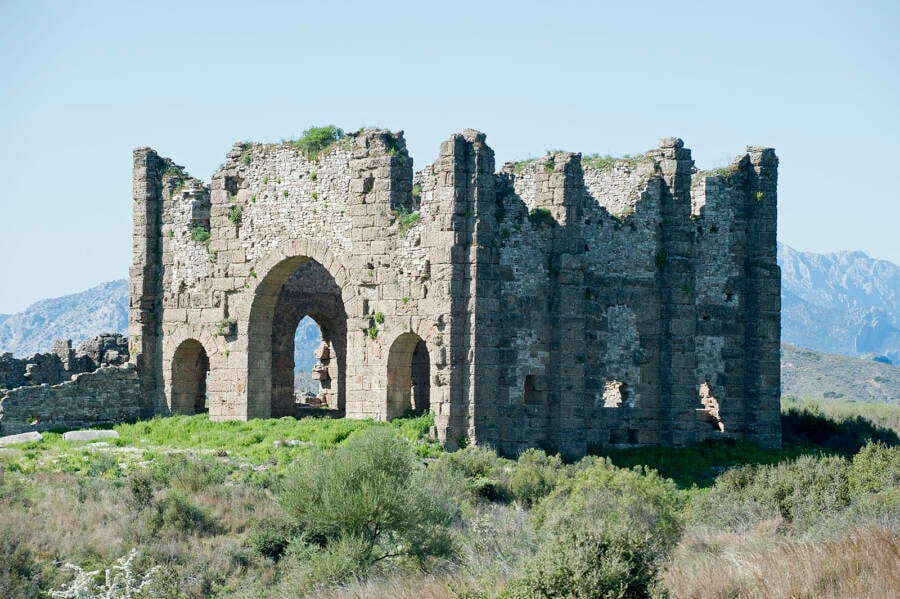
Wikimedia CommonsThe Roman basilica at Aspendos.
Financially, the Turkish government has demonstrated substantial commitment by allocating 1.1 billion Turkish liras (approximately $33.4 million USD) for excavation, restoration, and landscaping works, with plans to invest an additional 6 billion liras (just over $164 million) in 2025. This funding supports not only archaeological activities but also the enhancement of visitor facilities, including welcome centers, lighting installations, and comprehensive visitor management plans to improve the overall experience at these historical sites.
However, as The Guardian reported, the project has faced criticism, particularly concerning development plans at certain cultural heritage sites. At the time, archaeologists voiced concern over proposals to construct beach facilities at the ancient site of Phaselis on the Mediterranean coast, fearing such developments could set a dangerous precedent for the preservation of Türkiye’s cultural heritage.
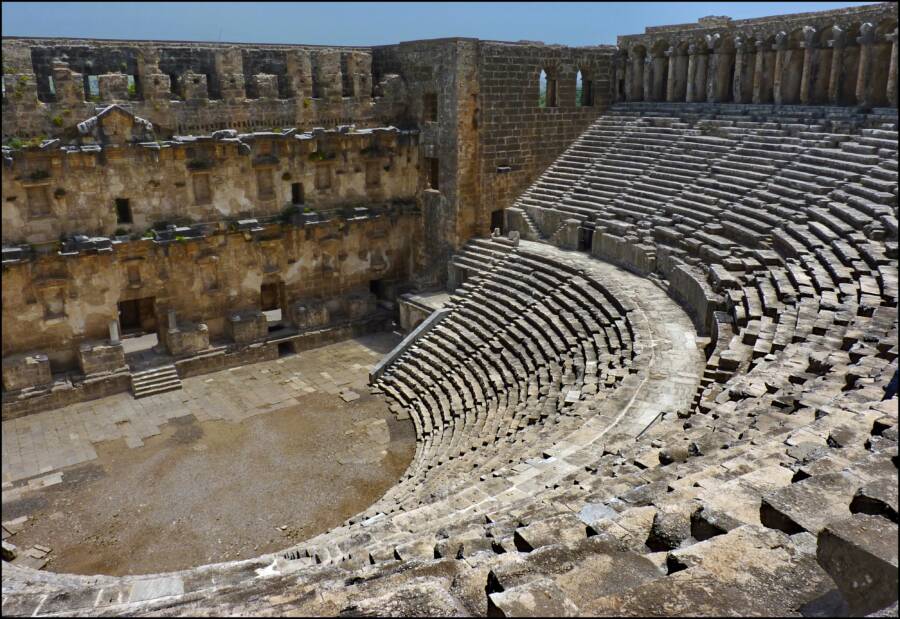
Wikimedia CommonsAspendos’ famous Roman Theater.
“Phaselis is so valuable it deserves to be listed as a Unesco world heritage site,” said Dr. Sevgi Temiz, president of the Turkish Association of Archaeologists’ Antalya branch. “If the court rules in favour of this plan, it will set a precedent. It will pave the way for public beaches to be created within any ancient city situated on the shoreline.”
But while some elements of the project may be controversial within the archaeological community, the broader scope of the initiative seems to be paying off, given how much archaeologists have unearthed in just a few short months.
After learning about this Hermes statue found in Aspendos, read about the Zeus statue head that was unearthed in Aphrodisias. Then, read about the Hermes statue that was found intact in a Bulgarian sewer.





